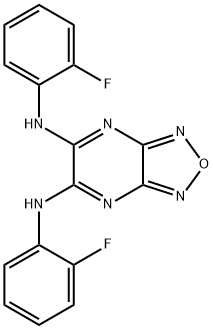210302-17-3
 210302-17-3 結(jié)構(gòu)式
210302-17-3 結(jié)構(gòu)式
基本信息
CS-2890
BAM15 >=98% (HPLC)
N,N'-bis(2-fluorophenyl)[1,2,5]oxadiazolo[3,4-b]pyrazine-5,6-diamine
[1,2,5]Oxadiazolo[3,4-b]pyrazine-5,6-diamine, N5,N6-bis(2-fluorophenyl)-
BAM 15 (N5,N6-bis(2-Fluorophenyl)-[1,2,5]oxadiazolo[3,4-b]pyrazine-5,6-diamine)
物理化學(xué)性質(zhì)
常見問題列表
| Target | Value |
|
AMPK
() |
BAM 15 is able to increase O 2 consumption across a broad dosing range without increasing ROS. BAM 15 and FCCP are structurally unrelated and it is observed that low doses of BAM 15 from 100 nM to 1 μM increase cellular O 2 consumption rate (OCR) to a similar degree as FCCP, but higher concentrations from 1 μM to 50 μM reveal that BAM 15 is able to maintain uncoupled respiration at a high rate in a range of cell lines. BAM 15 is fully capable of increasing mitochondrial respiration in the presence of oligomycin and does so across a broader concentration range than FCCP in both myoblasts and hepatocytes. BAM 15 induces mitochondrial swelling, demonstrating that BAM 15 is a protonophore. BAM15-treated cells are more viable than FCCP-treated cells when administered across a broad dosing range up to 50 μM.
Compare to vehicle-treated mice, animals that receive BAM 15 are protected from kidney injury as indicated by lower plasma creatinine levels at 24 and 48 h post-ischemia, reduced tubular necrosis, less depletion of brush border villi, less obstruction of proximal tubules, and less immune cell infiltration.


